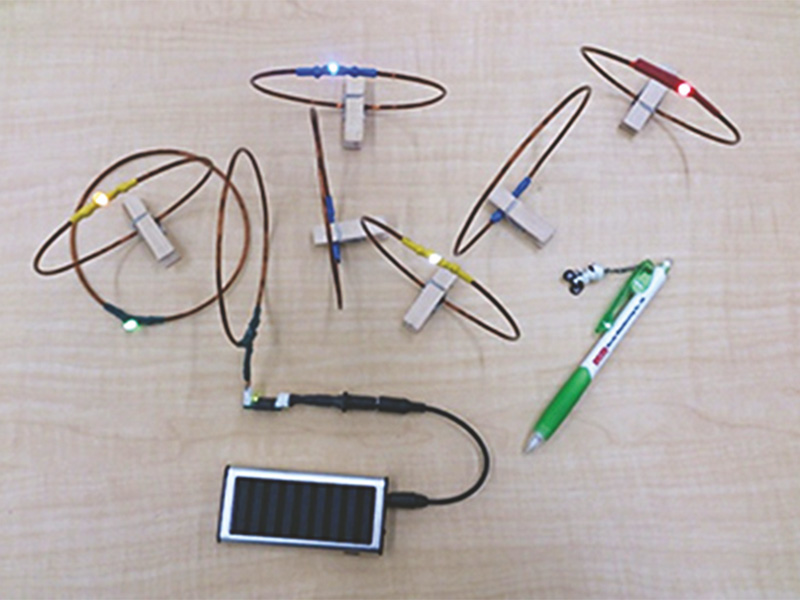
The direct current resonance method is an amalgamation of several technologies, including power storage device technology, wireless transmission technology, power module technology (to enhance power conversion efficiency) and EMI technology. Going forward, the developer aims to create new value in the electronics field by proposing solutions and developing products with value. These will be tailored to a variety of usage scenarios and applications.
Major features
• This is a wireless power transmission system from a direct current power source: Most of the power that people use is direct current (DC). Even commercial alternating current (AC) is converted to direct current, and nearly every electronic device runs on direct current voltage. Converting energy from a direct current power source can enhance efficiency.
• The technology directly converts between electric energy and electromagnetic field energy: The goal is to require only one direct power conversion when transmitting power wirelessly as opposed to the four to six repetitions required up to now. This allows overwhelming energy savings and gives a big advantage in terms of compactness and lightness.
• The technology expands the resonance field to transmit power: Innovations in transmitting and receiving devices and resonance devices can expand the resonance field and create new possibilities, such as supplying power to multiple loads. This should lead to technical applications and product development for various usage scenarios.
Comparison with existing methods
• Configuration is simpler, devices can be made smaller and lighter and system power efficiency can be improved as compared to the magnetic resonance method.
• There is a higher degree of freedom in the layout of power transition and receiving devices compared to the inductive coupling method, and no heavy magnetic material (iron) and coils (copper) are needed.
• Compared to the electric field coupling method, the new technology is superior when a greater transmission distance is required. No physical contact is required.
• The amount of power transmitted using this method is greater than the amount of power transmitted using the radio wave method. This allows power transmitting and receiving devices to be smaller.
Applications
The objective of this development is to get the technology into use in fields where a wireless arrangement is of high value. These are not limited to supplying power to such mobile devices as smartphones and tablets. They could also include small battery-operated electronic devices and communications cards. The technology would be primarily developed for applications requiring relatively small amounts of power. For applications requiring relatively large amounts of power, such as electric vehicle recharging, the developer will also consider the use of arrangements like open innovation as well as technical support and licensing.
Developer
Murata Manufacturing Co., Ltd. has developed a “direct current resonance” method as a new wireless power transmission system technology. Headquartered in Kyoto, Japan, the company employs over 37,000 people and its sales have fetched 681,021 million yen (USD 6,900 million approx).



